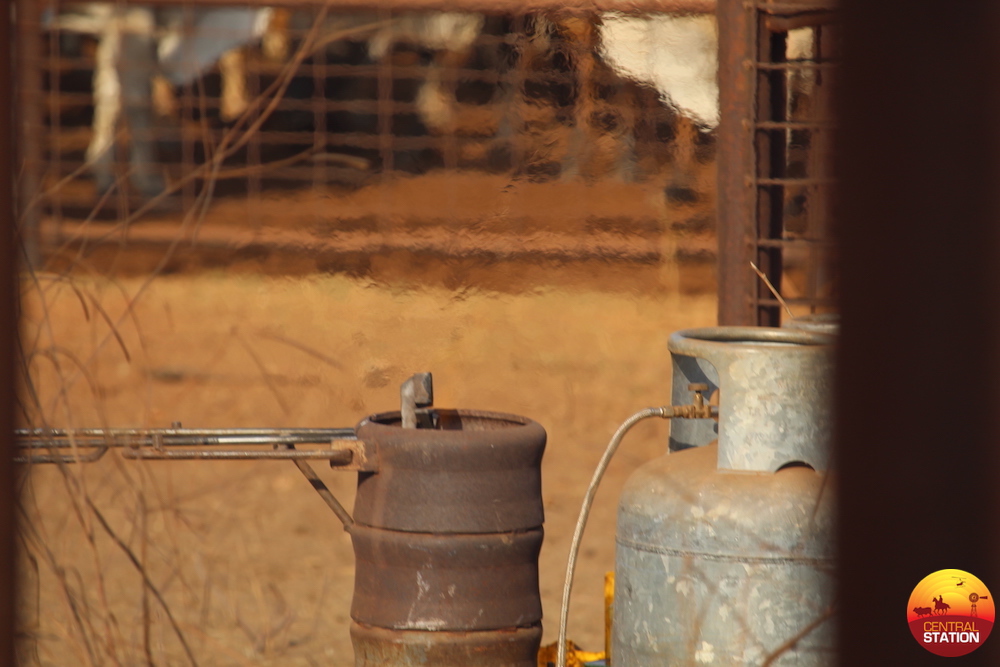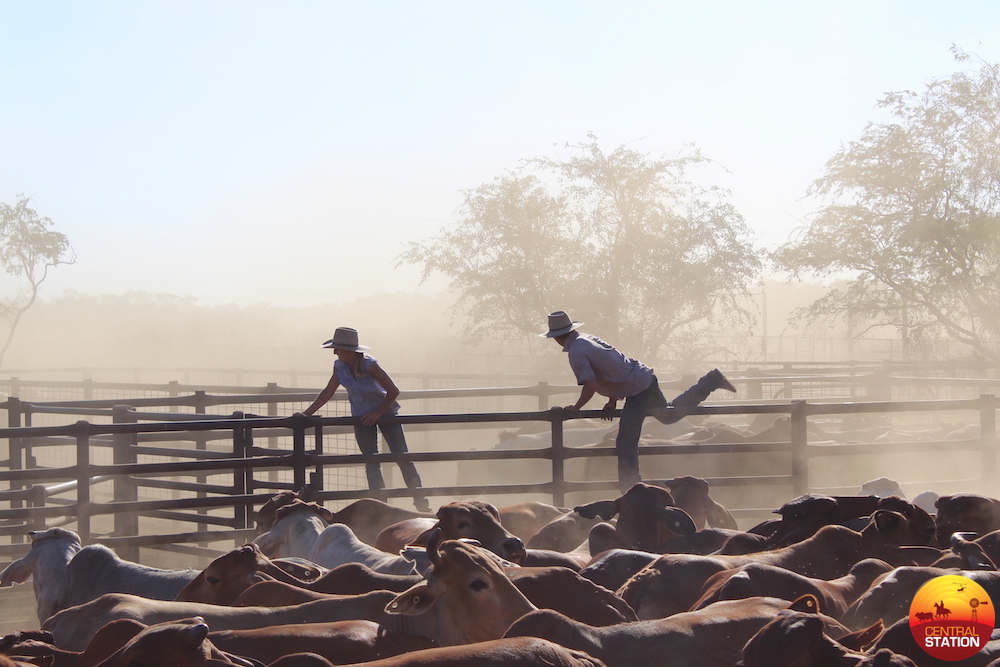Drafting at daylight
Host: Meda Station
Written by Troy Haslet, Manager – Meda Station
(This is part 2 of a 3-part series. Click here for part 1).
Drafting days are the early-start days – we try to get out to the yard just before daylight. This is done so that at first light we can get started and get the bulk of the drafting done before the temperature starts rising. Brahmans naturally don’t like pressure and as they start heating up they stir up easily.
We operate in the yards with a low-stress approach to the cattle work. Pressure and release is used to get the cattle to work the way we want them to. This breed of cattle (Brahman) learn habits really quick and if they have a trouble-free run through the yard they usually remain that way until spoilt (not spoiled!).
Our draft is a fairly simple process and an effective way of keeping on top of herd management. Plus, it allows us to get the breeders back out to their paddocks without spending long periods of time in the yards. The thinking behind this is to minimize mis-mothering and aborting of calves due to stress.
I will quickly run over the process then go over in more detail.
The cattle are bought up to a round pen and drafted off into respective yards. The cows and bulls go up the race, weaners are split into male/female and calves are branded and then let go with the cows.
 Bring cattle up towards round yard.
Bring cattle up towards round yard.
There are usually 9 people in the yard. The head stockman is the one that does the drafting, he will have one person in the round yard. Then there are a couple of people in each yard going back towards receiving yard. There will be one person keeping a tally of draft, two people up at calf cradle branding calves, and one on the race helping keep cows up to me.
The cows will normally travel through the round yard first and then up to the head bale as they do this twice a year and know the drill. In the head bale they will be vaccinated and then sent one of two ways: wet cows are let straight back out into the bush yard; the dry cows will be pregnancy tested and if pregnant/PTIC (Preg Tested In Calf) will be let into the bush yard.

Dry/PTE (Preg Tested Empty) cows will be tagged and drafted off into a different yard. Our thinking here is if they have failed to get in calf over the wet season they a more than likely not going to during the dry. This is because the nutrition requirements for them to get in calf are high and dry season feed will not providing adequate nutrition. If they do manage to get in calf, they will be out of sync with our optimum calving time which is leading into the wet season when the feed is providing optimum nutrition.
Any cows that are not fitting into our breeding program such as aged cows (10+ years old) and bad tempered cows are spayed (sterilized). They are turned out with the rest of the breeders and hopefully come in the following year fat for the meat works.
Weaners usually run through the draft second and are split into male and female. They are split because our heifers are kept on the river at Meda and steers are kept on the river at Kimberley Downs. We truck our weaners back to their respective yard and they stockpiled there for up to 10 days. (My third blog will go more our weaner program.)

Calves are branded, dehorned, earmarked, tagged and then bushed back with cows to get them back onto their mums. We brand, earmark and tag so that there are three forms of identification, with each one having pros and cons. Calves are also dehorned. This is done for two reasons – firstly for animal health and safety, and secondly for human health and safety. Male calves are also castrated. Once this process has been finished (which normally only take up to a minute) they are let back to their mum.


Once we have drafted the mob (this depends on number of head, ranging from 300 to 1000 cows) the cows that were put into the bush yard are let out on horseback and walked back to their paddock and then blocked up. We will usually block-up for up to an hour if they are going straight back into their paddock. This is to allow cows and calves to mother up. In some places we have smaller holding paddock which we will let them spend the night in, and muster them out the next morning.

So the mustering and drafting happens like this day-in-day-out for 10 to 12 days. We then pull up with the mustering for a few days to process the weaners that have been stockpiled (tomorrow’s blog).
